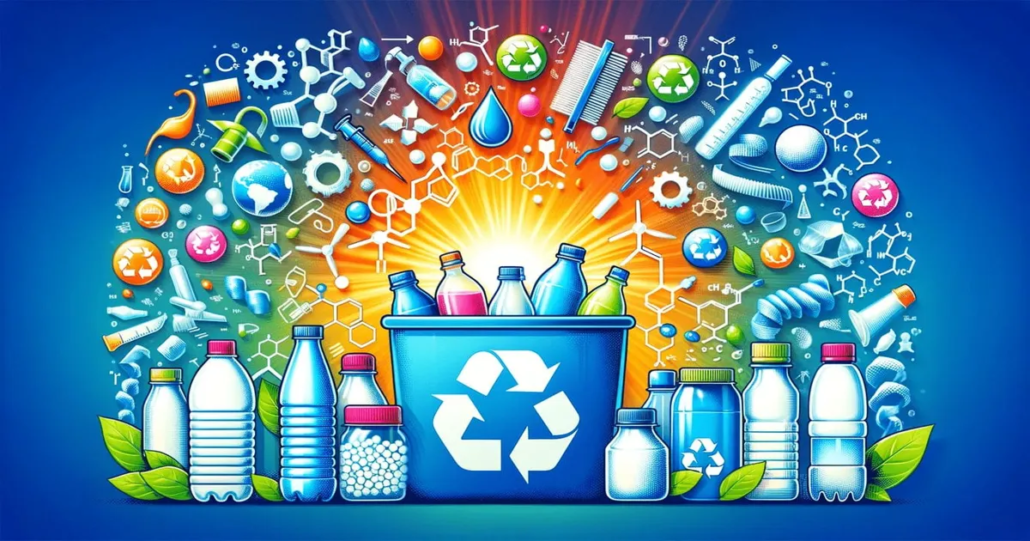Unveiling the Impact of Polyethylene in Container Innovation
What is polyethylene?
Polyethylene is a type of polymer, a material made up of long chains of repeating molecular units called monomers. It’s one of the most commonly used plastics worldwide. Polyethylene is versatile, durable, lightweight, and relatively inexpensive to produce. It’s often used in packaging (such as plastic bags and bottles), toys, pipes, and various other applications. There are different types of polyethylene, including high-density polyethylene (HDPE), low-density polyethylene (LDPE), and linear low-density polyethylene (LLDPE), each with slightly different properties and uses.
Historical Development of Polyethylene
Polyethylene, discovered accidentally in 1933 by Reginald Gibson and Eric Fawcett at ICI, underwent significant developments in the following decades. Karl Ziegler and Erhard Holzkamp’s breakthrough in 1953 led to the creation of high-density polyethylene (HDPE), while Ziegler and Giulio Natta’s collaboration in 1954 resulted in low-density polyethylene (LDPE). These discoveries facilitated polyethylene’s commercialization and widespread adoption in various industries due to its versatility, low production cost, and ease of processing.
Subsequent innovations led to the creation of variants like linear low-density polyethylene (LLDPE) and ultra-high molecular weight polyethylene (UHMWPE), further expanding its applications. Polyethylene’s historical development showcases a journey of accidental discoveries, scientific ingenuity, and persistent innovation that has profoundly impacted modern industry and everyday life.
Polyethylene is used in a vast array of products across numerous industries due to its versatility and favorable properties.
The Role of Polyethylene Containers and Bottles in Modern Packaging
Containers and bottles made from polyethylene play a crucial role in packaging various goods, offering convenience, durability, and cost-effectiveness. Here’s a detailed look at their characteristics, manufacturing process, and applications:
Characteristics:
Polyethylene containers and bottles are available in different forms, primarily high-density polyethylene (HDPE) and low-density polyethylene (LDPE). HDPE containers are rigid, strong, and have excellent chemical resistance, making them suitable for storing liquids such as detergents, motor oil, and household cleaners. LDPE containers, on the other hand, are more flexible and are commonly used for squeezable bottles, like those used for shampoo, lotion, and condiments.
These containers and bottles can be manufactured in various shapes, sizes, and colors to meet specific packaging requirements. They are lightweight, which reduces shipping costs and environmental impact compared to heavier materials like glass. Additionally, polyethylene containers are typically recyclable, contributing to sustainability efforts in the packaging industry.

Applications:
Polyethylene containers and bottles find widespread applications across various industries:
Household Products: HDPE containers are used for packaging household cleaning products, laundry detergents, and automotive fluids due to their chemical resistance and strength.
Personal Care Products: LDPE bottles are commonly used for packaging shampoo, conditioner, lotions, and other personal care products due to their flexibility and squeezability.
Food and Beverage: Both HDPE and LDPE containers are used for packaging food items such as sauces, condiments, cooking oils, and beverages like milk and juice.
Pharmaceuticals: Polyethylene containers are utilized for packaging pharmaceutical products such as tablets, powders, and liquid medications, providing protection against moisture and contamination.
Industrial Applications: Polyethylene containers are also used in industrial applications for storing and transporting chemicals, lubricants, and other bulk materials.
In summary, containers and bottles made from polyethylene offer a versatile and cost-effective packaging solution for a wide range of products, contributing to their popularity across industries.

Polyethylene’s Role in Play and Performance:
A Look into Toy and Sporting Goods Innovation
Polyethylene, often hailed as a marvel in modern material science, plays a significant role in shaping the world of toys and sporting goods. Its unique properties make it an ideal choice for manufacturers seeking durability, safety, and versatility in their products.
in the realm of sporting goods, polyethylene’s properties are highly valued. In sports equipment, such as helmets and pads, polyethylene’s impact resistance helps protect athletes from injury during intense physical activities.
Additionally, its lightweight nature contributes to the agility and maneuverability of sports gear, providing athletes with the freedom to move swiftly and comfortably. In sports balls, such as soccer balls and basketballs, polyethylene bladders provide excellent air retention, ensuring consistent performance and playability over time
Beyond its performance attributes, polyethylene also offers environmental benefits in the realm of toys and sporting goods. As a recyclable material, it supports sustainability efforts by enabling the reuse and repurposing of old toys and equipment into new products, reducing waste and conserving resources.
Moreover, its durability and longevity mean that toys and sporting goods made from polyethylene have a longer lifespan, reducing the need for frequent replacements and minimizing environmental impact.

Positive Environmental Aspects:
Lightweight: Polyethylene is lightweight, reducing transportation emissions and energy consumption compared to heavier materials like glass or metal.
Durability: Polyethylene products are often durable and long-lasting, reducing the need for frequent replacements and minimizing waste generation.
Recyclability: Polyethylene is recyclable, and many recycling programs accept polyethylene products. Recycled polyethylene can be used to manufacture new products, conserving resources and reducing the demand for virgin materials.
Energy Recovery: Polyethylene can be incinerated in waste-to-energy facilities, where the heat generated is used to produce electricity or heat, contributing to renewable energy generation.
Versatility: Polyethylene’s versatility allows it to replace materials that may have higher environmental impacts in certain applications. For example, lightweight polyethylene packaging can reduce the need for heavier materials, thus lowering overall environmental burdens during transportation.
FAQs about polyethylene
1-What are the main applications of polyethylene?
Polyethylene is used in a wide range of applications, including packaging (such as plastic bags, bottles, and films), construction materials, pipes and fittings, automotive components, toys, medical devices, and industrial applications.
2- What are the environmental impacts of polyethylene?
While polyethylene offers various benefits, it also poses environmental challenges such as plastic pollution, resource depletion, and greenhouse gas emissions. Proper management of polyethylene waste, recycling initiatives, and efforts to promote sustainable alternatives are essential to mitigate these impacts.
3- polyethylene safe for food packaging?
Yes, polyethylene is commonly used for food packaging due to its inert nature, which means it does not react with or leach harmful substances into food. However, food-grade polyethylene must meet regulatory standards to ensure safety.






